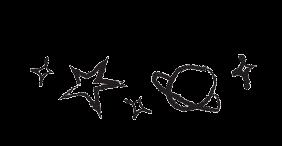The Perfect Nine: The Story of the Original Feminists by Riddhi Kanetar Mother Earth. Motherland. Mother-tongue. The land which we inhabit, the nation from which we descend, the culture that we speak, is distinctly feminised. Although the nation-state is a relatively modern social construct, these tropes have predated the ideological advent of nationalism. Indeed, Ngugi wa Thiong’o’s ‘genre-bending epic’, The Perfect Nine, is a testament to the potency of women, both as the founding figures of a primordial cultural tradition, as well as the embodiment of strength. Ngugi is a revered figure in the post-colonial canon, and this book exemplifies why. He seamlessly amalgamates cross-cultural literary traditions, from Kenyan Gikuyu to classical Homeric, to construct a unique body of work. Although it is labelled as a novel, The Perfect Nine reads closer to an epic, due to its distinctly rhythmic verse. In doing so, Ngugi has privileged an oral mode of storytelling that is native to Kenya’s own literary history. Like many traditional epic poems, this one starts by narrating the origins of Kenya’s tribes: Ngai, the creator of the world, offered the rich lands of Kenya to Gikuyu, the first man, and Mumbi, the first woman. The two then had ten daughters—known as ‘The Perfect Nine’, or according to Ngugi, ‘the original feminists’. But these women are not just the daughters of Gikuyu and Mumbi. Throughout the narrative, Ngugi is consciously shaping their own individual identities. When 99 suitors arrive to seek the hands of these women, they are sent on a journey to prove themselves. But contrary to fairy tales, wherein the socially-conditioned prince thinks it is his sole responsibility to save the princess, it is the Perfect Nine who outperform their suitors. Their valour is unmatched and emblematises the strength of the Gikuyu people, from whom Ngugi is descended. No one weaves allegory quite like Ngugi. He invokes many tropes from Kenyan mythology, particularly through the allegorical references to the monsters that the Nine encounter, to represent the struggles that the Nine face in their journey. Yet what I found interesting was the modern resonance of these ideas. The Nine face ogres; they face crocodiles; they face lions—all of whom symbolise certain sociocultural vices in a modern nation. Ogres, in much of his work, are portrayed as acolytes of materialism and greed. Ngugi knew the challenges posed to a nation by capitalism, and particularly
20





